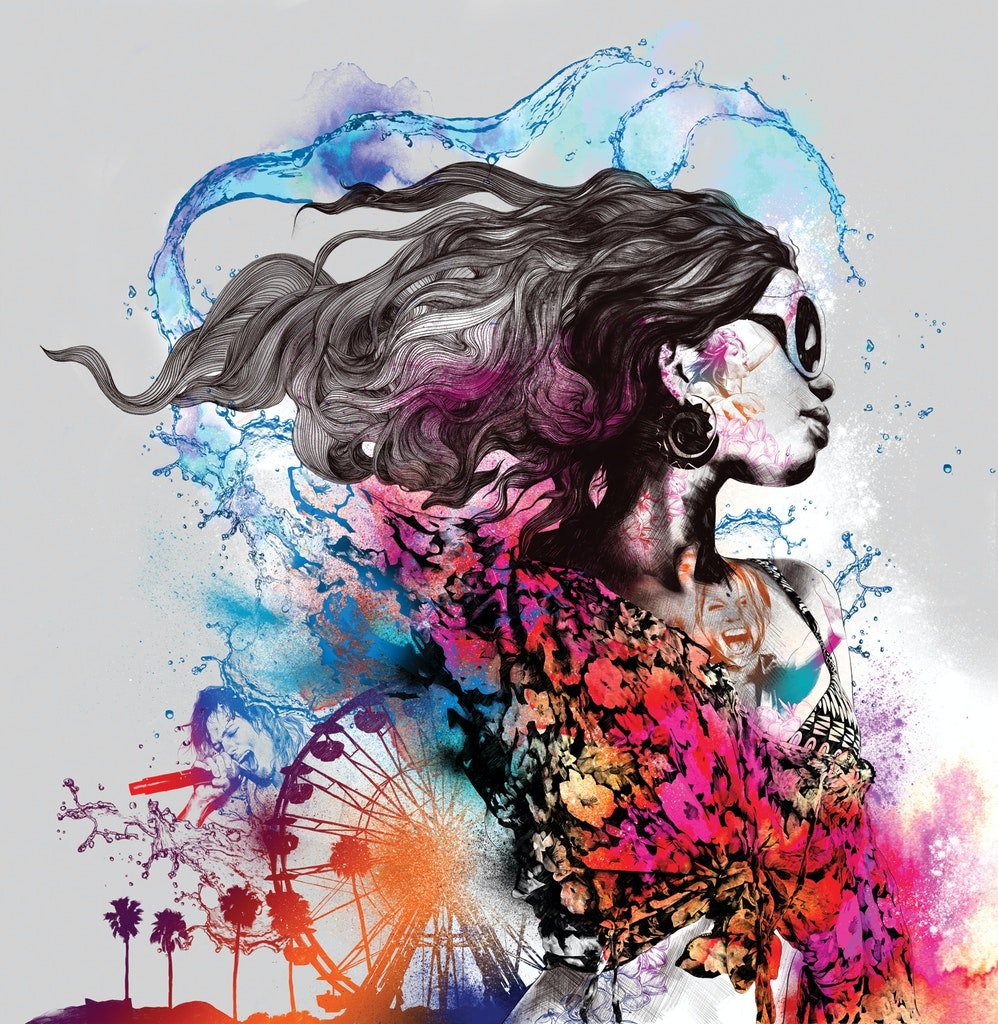Tattoo!
Illustration by Gabriel Moreno
The official definition of “tattoo” according to Webster is:
1: a mark, figure, design, or word intentionally fixed or placed on the skin:
a) one that is indelible and created by insertion of pigment under the skin
b) one that is temporarily applied to the skin, resembles a permanent tattoo, and usually lasts for a few days to several weeks
c) one that is composed of scar tissue intentionally created by cutting, abrading, or burning the skin
2: the act of tattooing : the fact of being tattooed
But what if the real tattoos are internal and not visible for all to see?
The moments, experiences and events that mark a person’s life but leave no external sign.
The transformative moments that impact what we feel, think, and believe.
Moments that resonate for a while or forever.
These are tattoo moments.
Illustration by Gabriel Moreno
Tattoo moments and identity.
We are what we are because of what we were, where we have been and whom we have intersected with.
We are in large part what we remember.
Often, we try to define a person by demographic or behavioral criteria.
We segment by media exposure, search history, geographic location, political affiliation, product ownership and leisure activities.
The fumes of people’s digital usage and external badging are read like entrails to understand and reveal motivations.
But do they truly paint a picture of who a person is, what they care about or what makes them tick?
Data, data everywhere.
So much data under which we sink
Data, data everywhere.
Does it paint a picture or help us think?
Imagine getting all the data you could collect about a person to paint a profile.
The reality is any individual is many different people depending on the specific mood and situation and in many ways may not be knowable.
So, we will parse the data depending on what we are looking for.
As has been written “we see as we are.”
Imagine if instead you could have a conversation with that person and ask questions like these:
a) What events and or people in your past have made you who you are today? Why?
b) What beliefs have you given up on and/or what beliefs have you aligned with more strongly? Why?
c) What makes you most happy and most fearful?
We might understand someone as a person and a human versus a consumer, user, or target.
We are not a compilation of our purchases, downloads, page views or other numerical juxtapositions.
The meaning is not often in the math.
Illustration by Gabriel Moreno
Tattoo moments and marketing.
For decades marketers have found certain stages in a person’s life where they are more susceptible to messaging and marketing.
Whether it is the impending birth of a child to a physical re-location there are times where people are more open to change or to paying attention.
Marketers also recognize that there are moments of interaction where up-selling or cross-selling is likely to be more successful, such as when someone is opening an account or when one is about to pay for items in one’s real or digital shopping cart.
Basically, marketers look for moments of greatest attention and interest.
The challenge is that everybody knows these rituals and some combination of high costs and fees to show up at these moments or a certain weariness and understanding by people of what is happening, makes these less differentiable.
If instead of thinking only about where someone is on a customer/purchase journey we think about where we can surprise them positively the most, or turn a negative to a positive, we find compelling tattoo moments.
For instance, if we want to get people to speak well about our product or service instead of advertising to them or desperately try to get likes or influencer mentions, why not give them a sample of the product for free? Why not re-allocate a portion of the communication budget to enhance the quality of the product or service which will then speak for itself and get its satisfied users to speak about it. In today’s world brands are more likely to scale through people if they have a superior product or service rather than just telling people they have a superior product or service.
Imagine if you were a cable company or publisher and re-allocate the “stop them from unsubscribing” budget where you slash prices, increase channels in a bundle or enhance broadband speeds to people who are quitting, to instead reward the most loyal customers by going to them and cutting their fees and/or upgrading their services to simply say thank you.
When someone least expects an act of generosity it has a tattoo like impact.
It means they are special, and they are not being taken for granted.
So many marketers promise to “surprise and delight” customers but do we really?
Instead of a yearlong spray of pellets that have little impact why not focus spending by delivering a couple of cannon balls of high impact interactions, gifts, or surprises?
One or two “surprise and delights” might be worth a year of messaging
Less is more. The rare is meaningful. The special resonates.
Traffic in scarcity to stand out in a world of abundance, sameness, and noise.
Find and fund the tattoo moments by asking “what can we do and where can we do something that will make someone come away different”?
Illustration by Gabriel Moreno
Tattoo Moments and Talent.
A combination of new technologies and the challenges of Covid-19 have forever changed the future of work and how talent views things.
A colleague of mine recently noted that most work could be segmented as “heads down”, “heads up” or “heads together”. “Heads down” would be tasks like reading documents, working on developing content and other primarily solo work. “Heads Up” is where we attend presentations and meetings primarily to share and gain information. “Heads together” is when we need to work together to collaborate, brainstorm, and network.
Cultures are important to companies. Connections with other people in the analog world can be important for people particularly early in the career to learn and build relationships. While much of the “heads down” and a majority of the “heads up” work can be done in a distributed and unbundled fashion, a large part of the “heads together” work can gain from in-person connections particularly early in a project or when teams are first getting together.
But the reality is that for most people the five day or even the three day a week model may be replaced by a few team interactions a quarter and many of these may happen outside the office at an off-site event, a restaurant, or a conference.
Companies are going to have far fewer opportunities to build the fabric of their cultures and managers are going to have far fewer in person opportunities to interact with their teams.
Therefore, every company must re-think how to manage the growth and development of their talent, the fabric of their culture and the strength of human connection when there will be just a few occasions a year.
How does make these interactions count and meaningful?
A significant investment in great training to help people grow themselves is a way companies will create tattoo moments that matter.
Ensuring that managers are trained to make the most of in-person interaction and to learn to empathize with the situation of their teams (family or other pressures, need for flexibility) or enable acts of generosity and kindness that will forge emotional links between people is another area that companies should focus on.
Increasingly companies will recognize that attracting and retaining talent means sculpting moments that matter. Powerful experiences, employee joy and a diverse fear free culture can be built around a few tattoo moments.
Regardless, we can all make our mark on each day by living it italicized, bold and with an exclamation mark!
Every day we should ask what made it memorable and special and how we tried with each interaction to help someone come away different and better.
Tattoo!



